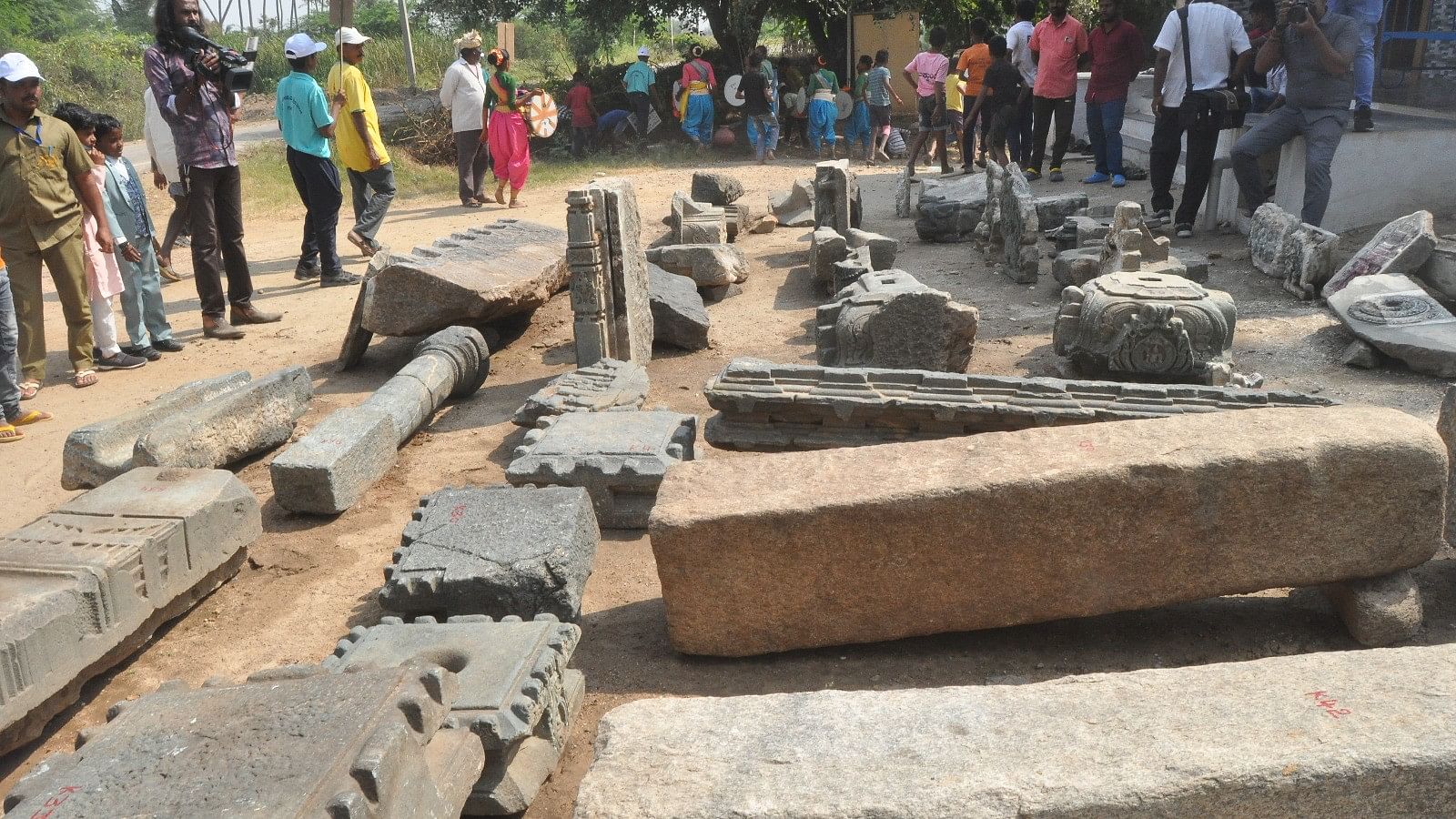
Hundreds of people carry the historic relics, collected through a door-to-door campaign, in the historical town of Lakkundi in Gadag district on Sunday. (Right) Ancient archaeological artifacts donated by the villagers. Historical evidence says there have been 101 temples and wells, including stepwells in Lakkundi.
Credit: DH Photo
Lakkundi (Gadag district): To recreate the ancient glory of Lakkundi, considered the administrative capital of the Vijayanagar Empire and the dynasties before it, the state government’s door-to-door campaign took a rather carnival form on Sunday.
The streets of Lakkundi, in present-day Gadag district, were decked with flowers and rangolis, women were seen parading with the holy kalashas and men were carrying palanquins of ancient relics, donated by the people themselves. A cacophony of folk songs, gigi pada and mangalavadya reverberated in the air throughout the collection of ancient relics.
Though the conservation effort in Lakkundi was long delayed by several governments in the past, the community involvement here seems as though it was long expected and overdue. People from all walks of life were found giving away statues, ancient relics, pillars and stones wholeheartedly to the palanquins set up by the Department of Tourism, Department of Archaeology, Museums and Heritage, and the Lakkundi Heritage Area Development Authority.
To Tourism Minister H K Patil, who also hails from the region, converting Lakkundi into a Unesco World Heritage Site seems to be the raison d’être. He called the campaign “the biggest cultural revolution of our times.” He said that by the end of December, the collection would be completed and the excavation process would begin.
He told reporters on Sunday that 1,050 artifacts were collected in a day with about 10 days of an awareness campaign by a team of scholars, administrators and gram panchayat volunteers towards conservation efforts.
He also said that 13 inscriptions have been discovered in various parts of the village.
Historical evidence says there have been 101 temples and wells, including stepwells, in Lakkundi. However, there are only about 60 temples today. This campaign aims to recreate the past glory, through a collection of relics long-forgotten and taken for granted over the years.
17 guntas of land given
Two brothers, Veerayya and Mariswamy, donated 17 guntas of land to the government, which will be taken for excavation soon. The family of brothers has been living in Kalmatha — an ancient mutt that has more than three inscriptions on its stones. Kalmatha and the land surrounding it were voluntarily handed over to the government by the brothers.
According to veteran tour guide Abdul Razak Dastagirsab Kattimani, Lakkundi’s area was vast and has been consistently shrunk. Currently, the area spans about 2.5 to 3 km. Kattimani, 73, says the inscriptions could date back to 10th and 11th centuries. One of the surprising artifacts collected on Sunday included a paleolithic weapon from Stone Age, said Dr Devarakonda Reddy, president of Karnataka Itihasa Academy. Hundreds of people including the minister, directors and deputy directors of various tourism-associated departments examined the archaeological remains of Lakkundi from morning to evening. Patil said while there were no plans to construct a closed museum, the artifacts would be kept in their original location and protected.
Hundreds of people carry the historic relics collected through a door-to-door campaign in the historical town of Lakkundi in Gadag district on Sunday. (Right) Ancient archaeological artifacts donated by the villagers. Historical evidence says there have been 101 temples and wells including stepwells in Lakkundi.
Credit: DH Photo